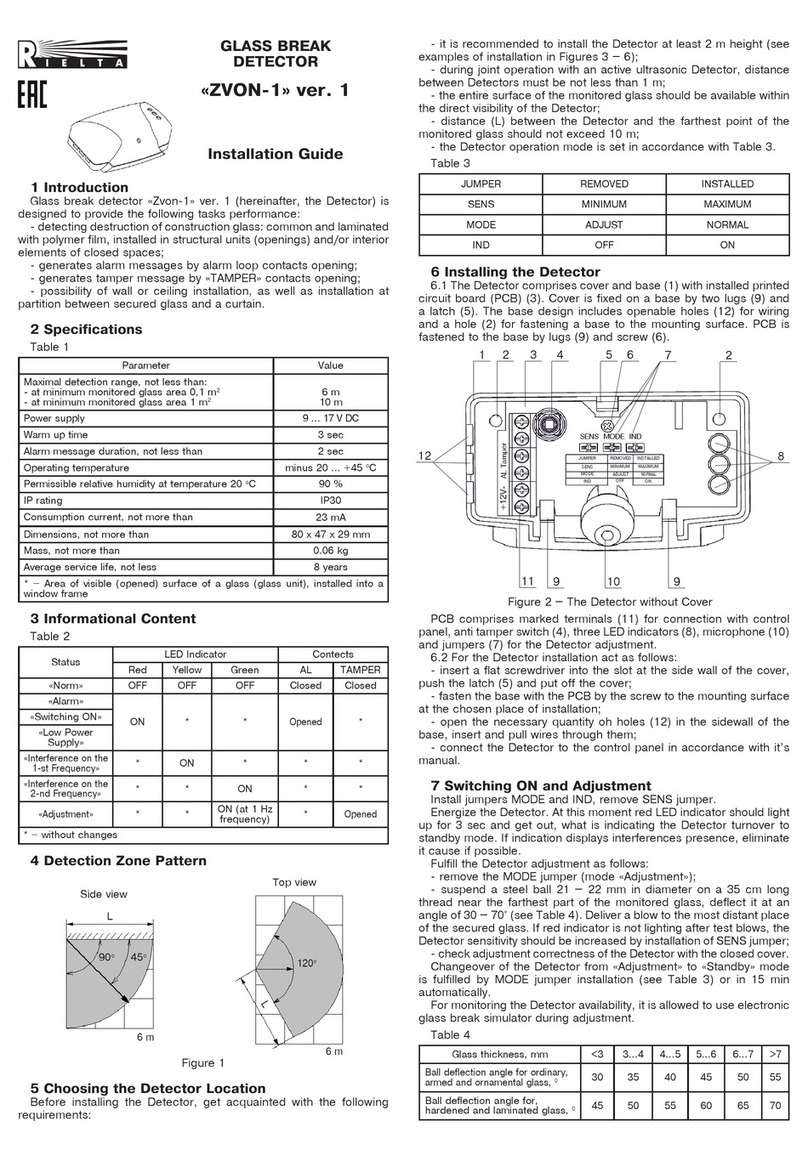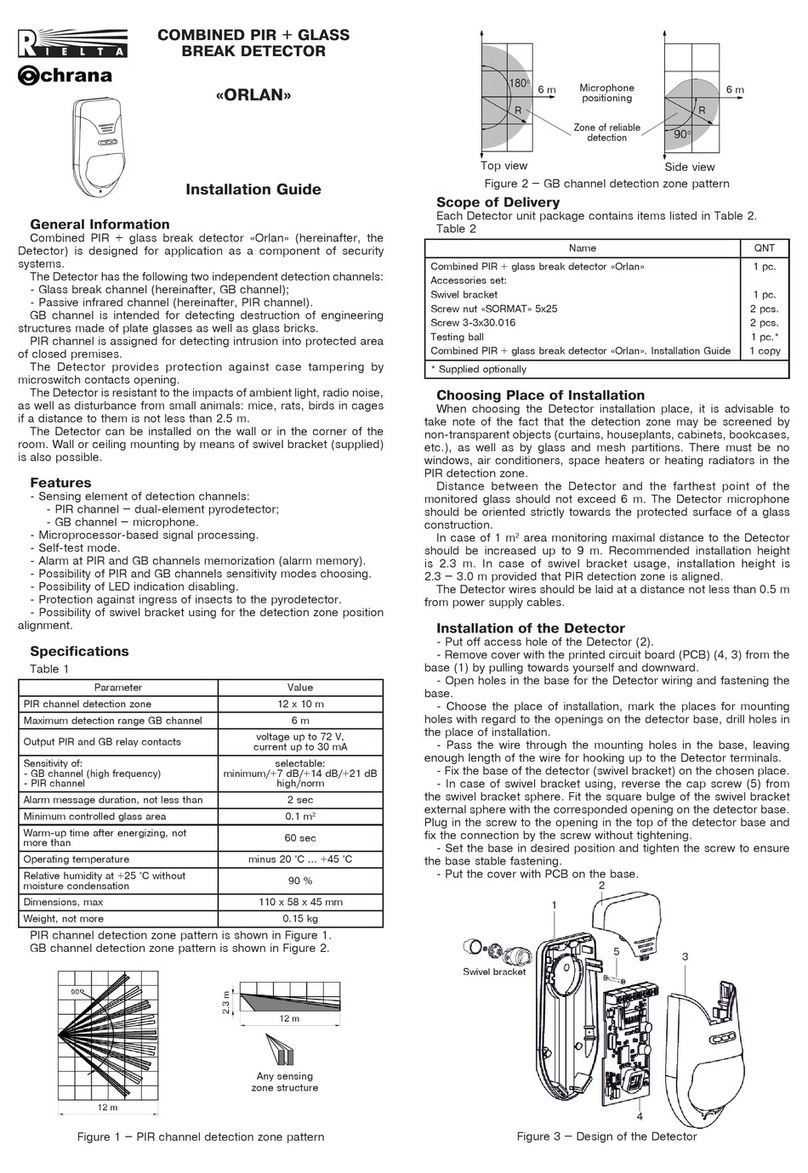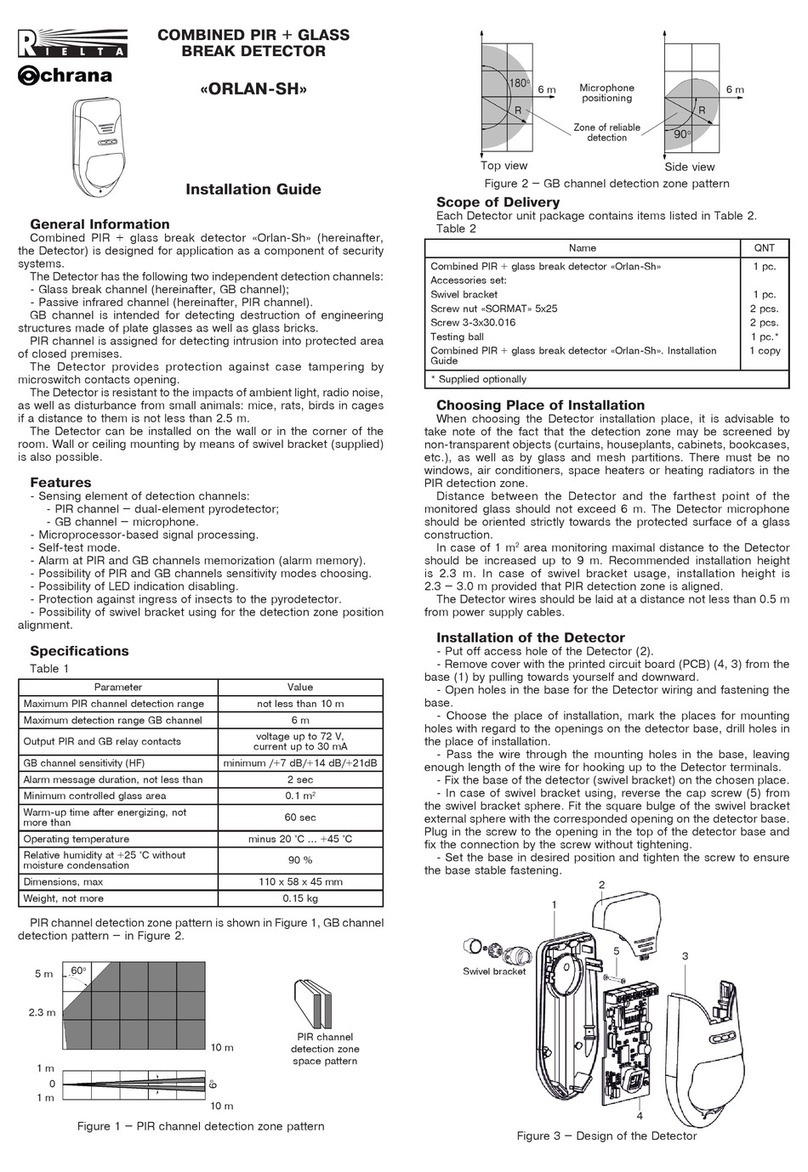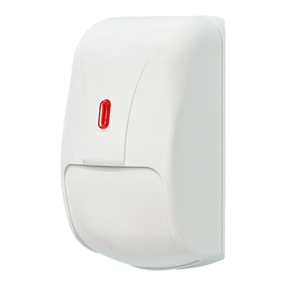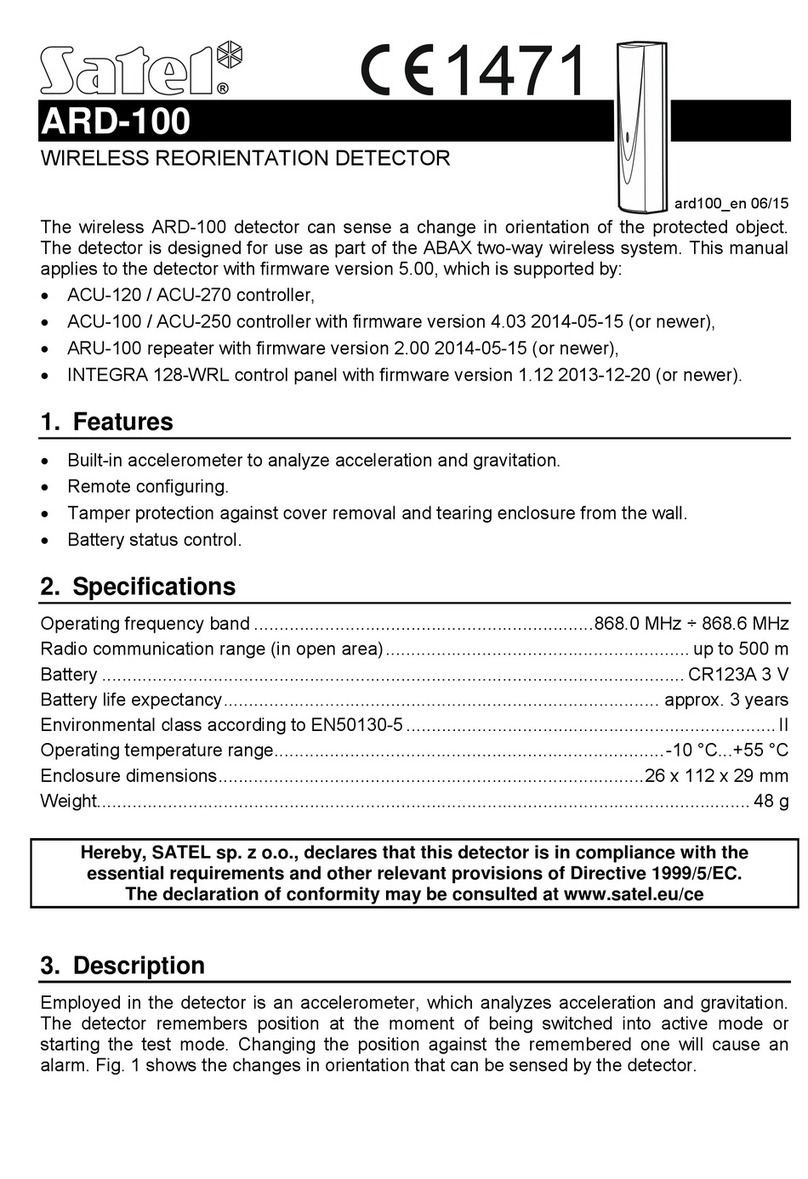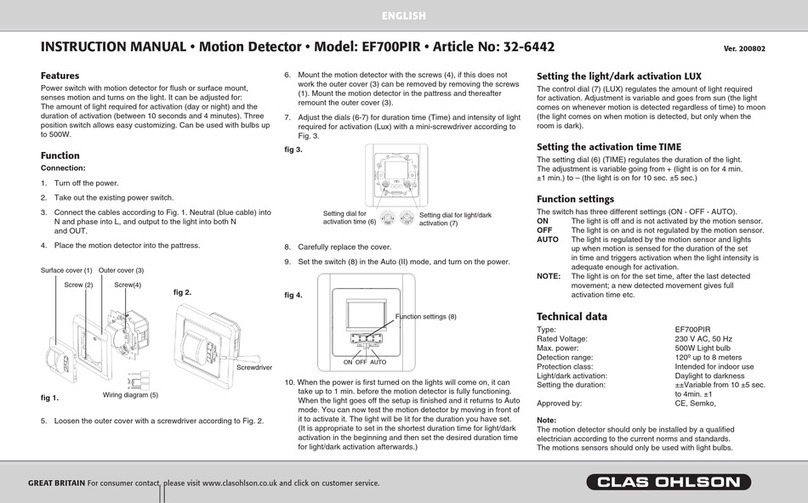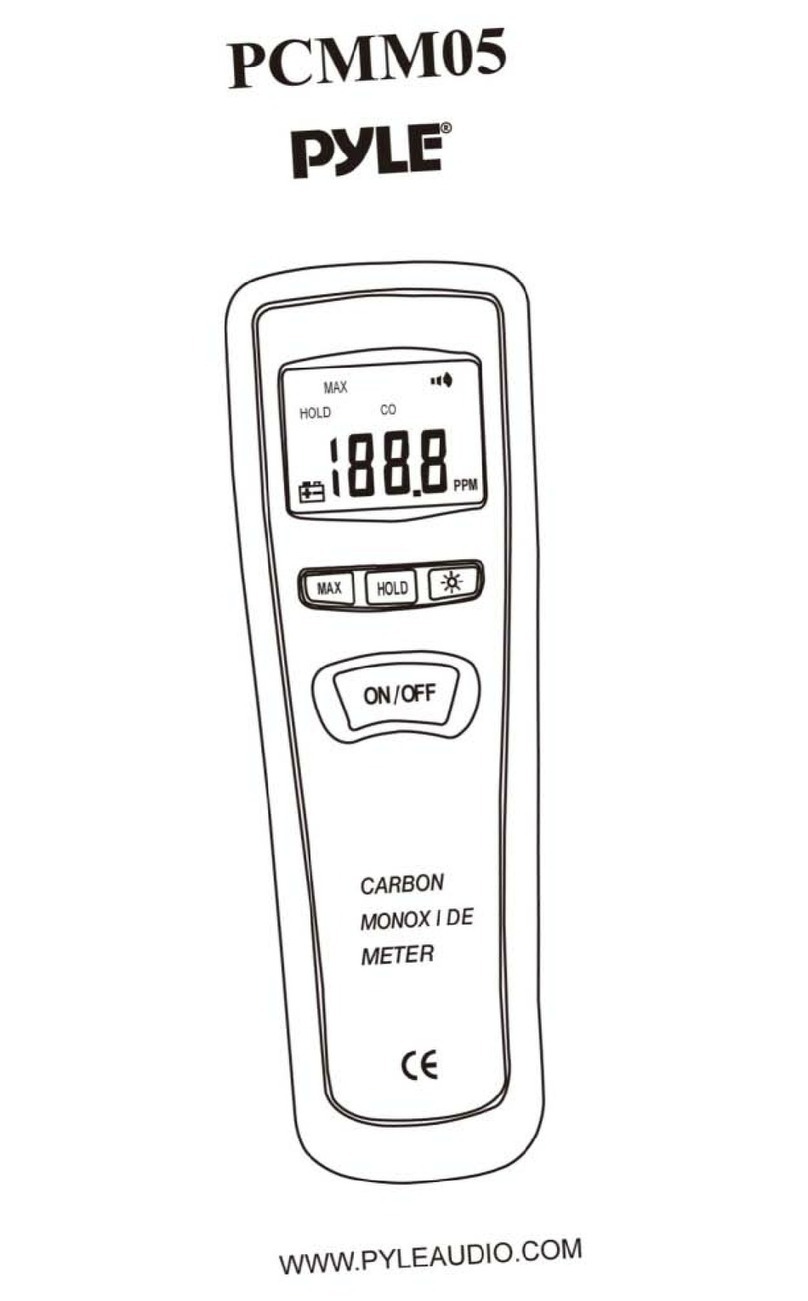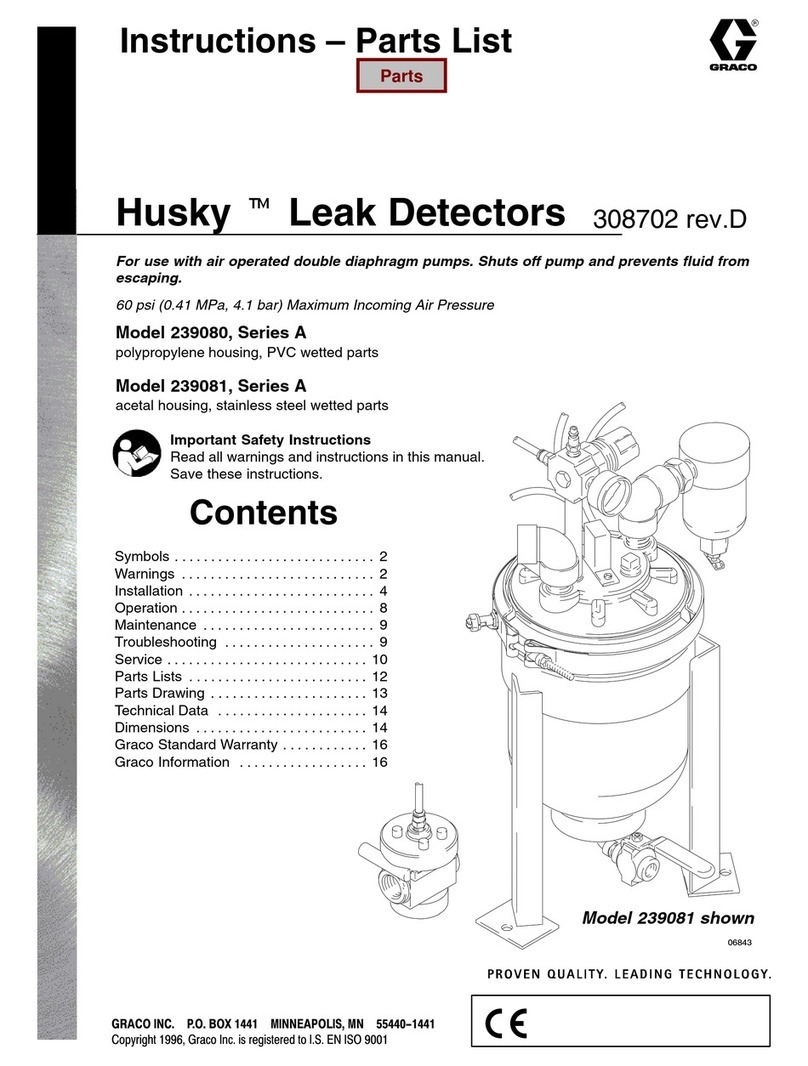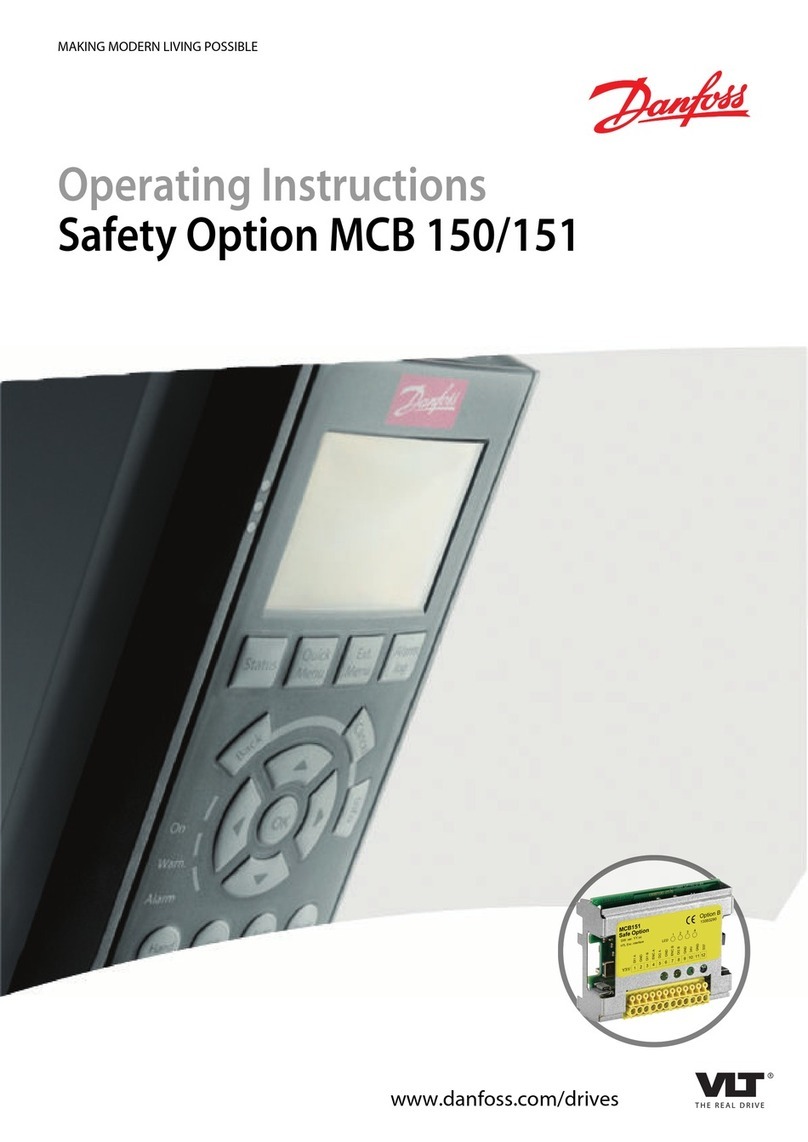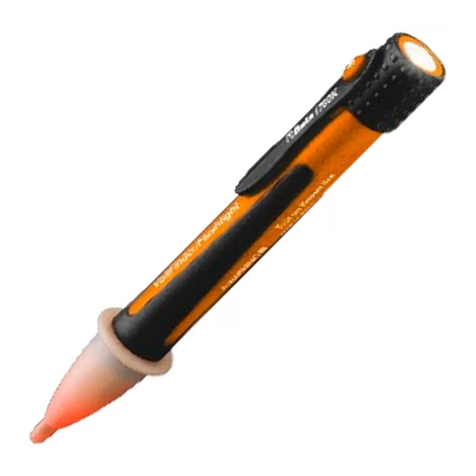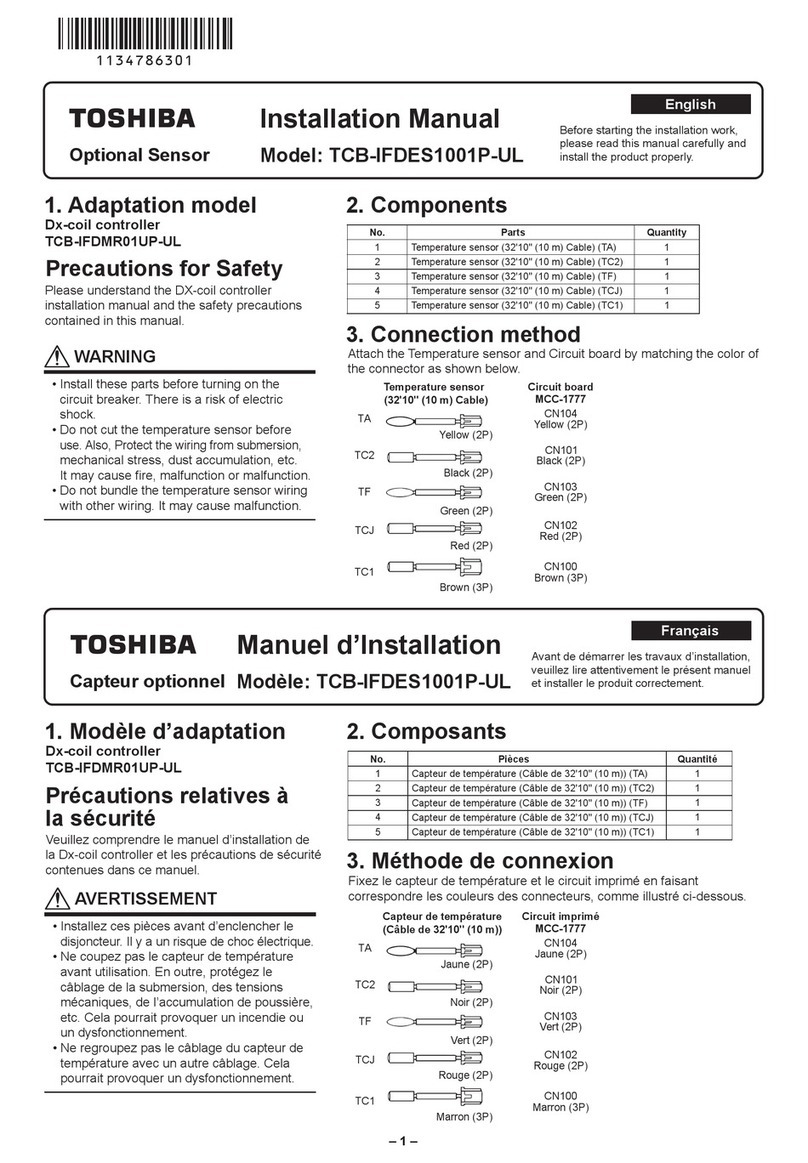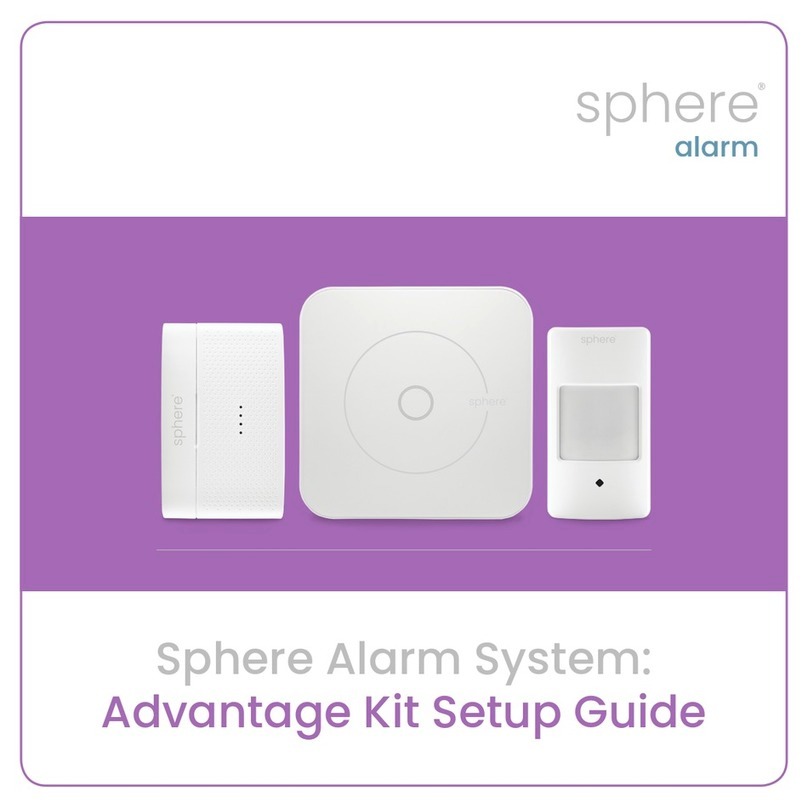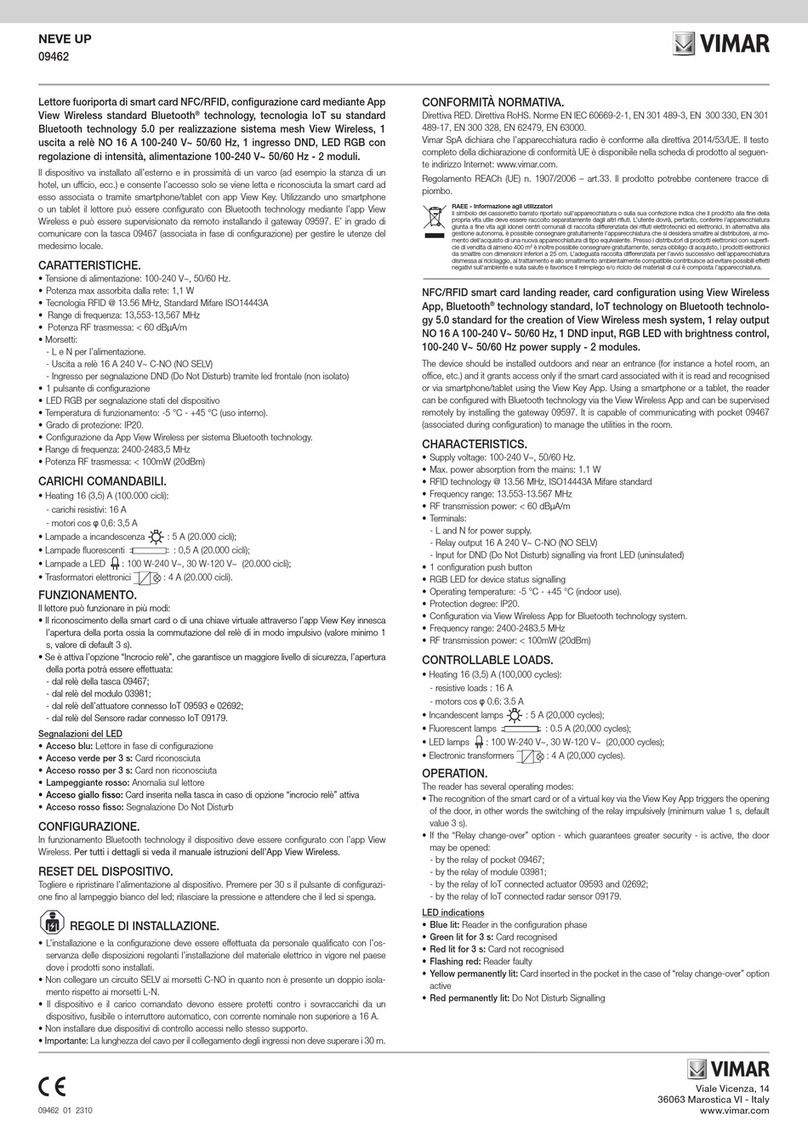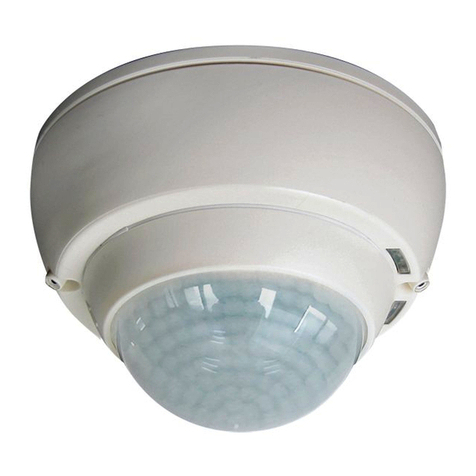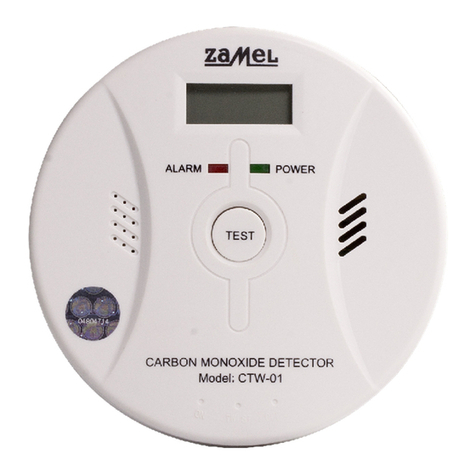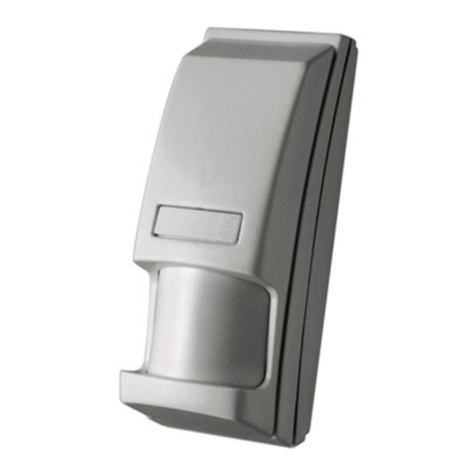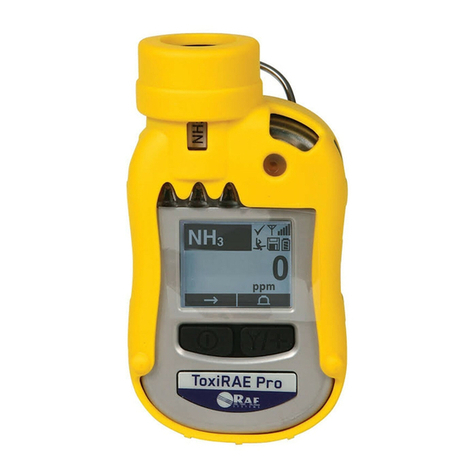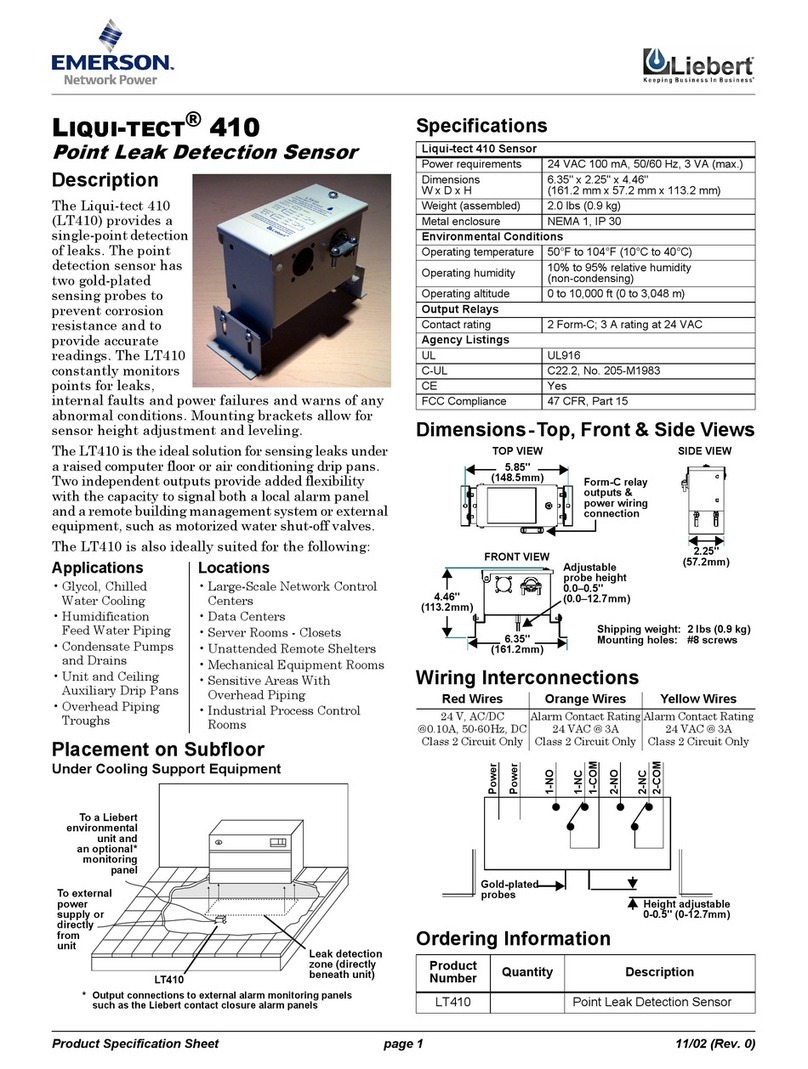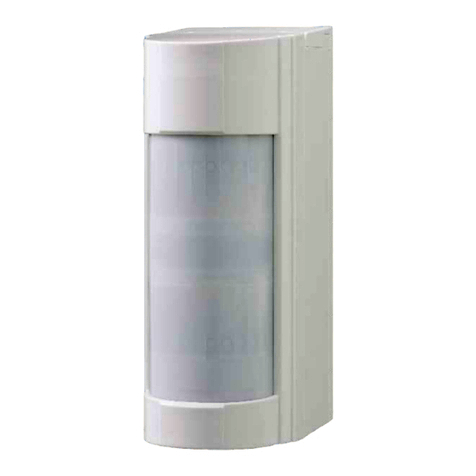Rielta GRAN-RK User manual

1 General Information
1.1 Security wireless inertia detector «GRAN-RK» (hereinafter «the Detector»)
is designed to detect changing of the monitored item position from it’s its
initial installation place and sending an alarm messages via wireless two-way
communication within frequency range from 433,05 to 434,79 MHz by the
«Rielta-Contact-R» protocol.
1.2 The Detector operates in the frequency range from 433,05 to 434,79 MHz.
The power radiated by the Detector doesn’t exceed 10 mW.
1.3 Wireless two-way communication “Detector – CP” is provided at the main
or reserve frequencies. Switching between the main and reserve frequencies is
accomplished automatically.
1.4 Radio communication is initiated by the Detector at 10, 15, 30, 60, 300
and 600 seconds intervals assigned during its logging to the CP. Alarm and
tamper messages are transmitted immediately.
1.5 The detector is powered by two power-supply batteries СR2450 type: main
and back-up one, both inside the Detector case.
1.6 The Detector generates and transfers messages with the following
information content:
- «Normal» – under keeping initial position;
- «Tilt-Alarm» – under tilt changing for 3° or more;
- «Displacement-Alarm» – item displacement from its initial position at a distance
0.25 m or more with the acceleration of 0.5 m/s
2
and more along any axis during
the period at least 1 s;
- «Tamper» – under case tampering or the detector removal from its place
of installation;
- «Failure» – under long-term vibration interferences;
- «Main power-supply low-battery»
–
main power-supply battery voltage drop
for less than 2.2
-0.2
V;
- «Backup power-supply low-battery» – back-up power-supply battery voltage
drop for less than
2.2
-0.2
V;
1.7 Wireless two-way communication «Detector – CP
»
, is provided at the main
or reserve frequencies. Switching between the main and reserve frequencies is
accomplished automatically.
1.8 The detector provides immunity to electromagnetic interferences.
1.9 Industrial interferences created by the Detector does not exceed the
limits for the facilities used in housing, commercial zones or production areas
with low power consumption.
1.10 The Detector is designed for continuous and uninterrupted operation.
1.11 The Detector operational stability provides its normal operation under
the following influencing factors:
a) Tilt changing for at least 1°,
b) Displacement from its initial position for the distance not more than 0.1
m with the acceleration of 0.2 m/s2 and more along any axis during the period
at least 1 s.
1.12 The Detector provides a possibility of a tilt sensitivity adjustment (the
sensitivity value is adjusted as one of a number of: 3°, 10°, 25°, 45°), as well as
displacement threshold adjustment (displacement threshold is adjusted as one
of a number of: 1 – min, 2, 3, 4, 5, 6, 7, 8 – max).
1.13 The Detector can be integrated in a security system in single-channel
or two-channel operation modes. In single-channel mode
«
Tilt-alarm
»
and
«
Displacement-Alarm
»
messages are combined in one. The operation mode is
chosen on the stage of the Detector binding with the CP.
2 Specifications
Table 1
Parameter Name Value
Power supply 2,6 V … 3,8 V DC
Operating temperature
minus 20 … +55 °С
Permissible relative humidity at +25 °С without moisture
condensation 98 %
Dimensions, max 65х55х20 mm
Weight, max 0,05 kg
IP rating IP54
Mean time to failure, not less 60 000 hours
Battery life under normal climatic conditions and assigned
radio exchange period not less than 60 sec under vibration
interference absence
- from the main battery, not less than
- from the backup battery, not less than
48 months
2 months
Average service life, not less 8 years
3 Scope of Delivery
Each Detector unit package contains the items listed in Table 2.
Table 2
Description Quantity
Security wireless inertia detector «GRAN-RK»
Lithium power-supply battery СR2450
Screw 3-3х30.016
Security wireless inertia detector «GRAN-RK». Installation Guide
1 pc.
2 pc.*
1 pc.
1 copy
* Installed
SECURITY WIRELESS INERTIA
DETECTOR
«GRAN-RK»
Installation Guide
4 The Detector Design
The Detector layout is shown in Fig.1.
The Detector comprises the following elements: the base with an openable
fixing hole (6) and a case cover with the printed circuit board (PCB) installed (1).
Main power-supply battery holder (2), «Reset» contacts (3), backup power-
supply battery holder (4), tamper (5) are located on the PCB.
5 Led indication
The Detector generated the following LED indication types:
- LED indication of the mode
«
Binding» (procedure of the Detector logging
in the CP),
- LED indication of the mode
«
Identification» is switched ON by the relevant
command from the CP. The LED indication continues lighting during 15 minutes
after the case is closed if other types of indication are OFF, and «Tamper»mes-
sage or indication inhibition command from the CP are not generated.
- The Detector state LED indication switches on after the Detector case is
closed and is deactivated after the first 15 minutes after the cover is closed on
the condition that during this time no Tamper message is generated or there is
no command from the CP on indication disabling.
The LED indication modes are listed in Table 3.
Table 3
The Detector Mode Indication
LED indication Note
End of the «Binding»
procedure
LED indicator lighting
red for 2 – 3 sec
«Binding» mode
LED indicator blinking green
with 0.25 s period
The Detector logging in the
CP in single-channel mode
LED indicator blinking green
with 1 s period
The Detector logging in the
CP in two-channel mode
«Identification» indication Alternate LED blinking red
and green
By the relevant command
from the CP
«Tilt-Alarm»*
«Displacement-Alarm»*
LED blinking red every 4 s
until the relevant messages
delivery is conformed
State indication is ON,
«Identification» indication
is OFF
«Communication Quality» See section «Communication Quality Appraising»
«Interference»* indication
LED blinking green with
the frequency 5 Hz under
detection of a movement with
acceleration of 0.2 m/s2and
more
«State» indication is ON,
«Identification» indication
is OFF
Initial orientation storage
procedure finishing* LED lighting green for 2-3 s
«State» indication is ON,
«Identification» indication
is OFF
«Norm» Indication is OFF
*) – The LED indication of the Detector
6 Binding with the CP
The binding procedure is intended for logging of the Detector in the CP with
further service information exchange.
6.1 Prepare CP for binding according to the CP Installation Guide.
6.2 When it is necessary to fulfill logging of the Detector in two-channel mode
press and hold the tamper contact (5). In other case the tamper contact should
stay in disengaged state up to the end of the binding procedure.
6.3 Observing polarity install first backup power supply battery to the holder
(4), and then the main one to the holder (2). If batteries are already installed,
then remove the isolators
6.4 In case of the absence of the indication mentioned above, close the
contacts «Reset» for 2-3 s.
6.5 Successful binding procedure finish is displayed by the Led indicator
lighting red for 2-3 s.
6.6 The time of binding procedure fulfillment is limited to 70 s, after it the
Detector switches to a sleeping mode. For «Binding» mode resumption it is
necessary to close the contacts «Reset» for 2-3 s.
7 Operating Modes
The Detector provides two operating modes – Mode 1 and Mode 2.
7.1 At Mode 1 the initial orientation in the space is stored after each «Tilt-
Alarm» and «Displacement-Alarm» message generation.
7.2 At Mode 2 the initial orientation in the space is stored after closing the
case of the Detector.
The «Norm» mode resumption after «Tilt-Alarm» message generation is fulfilled
only after the Detector initial position is restored.
7.3 The Detector operating mode is defined by the state of case tamper con-
tacts during initial 2 seconds after the successful binding procedure finishing
or during initial 2 seconds after energizing of the Detector logged in the CP. If
the tamper contact is closed, the Detector switches to Mode 1; if the tamper
contact is opened, the Detector switches to Mode 1.
7.4 After successful binding procedure finishing the Detector operates in
mode 1 independently of the tamper contact state.
Figure 1
1
6
2
3
4
5
BACKUP MAIN
RESET
а) Base b) Cover with the circuit board installed

10 Installation
10.1 Install the Detector in the place, where the radio communication quality
is apprised as «Excellent» or «Good».
10.2 The place of installation should be protected against accident mechanical
interferences: impacts, vibration.
10.3 Fasten the base to the mounting surface.
The main method of the Detector installation is fastening of the base to the
mounting surface is by means of double-sided tape. For the reliable Detector
mounting, fulfill the following steps:
- check, that the mounting surface is flat, dry and clean;
- put off protective film from the working surface of the double-sided tape;
- fix tightly the Detector to the mounting place and hold it down for 2-3 s.
To ensure removal control, the Detector is fastened to the secured object
by means of screw through the Detector openable hole (6) in the base of the
Detector.
10.4 Install the cover with the PCB to the base.
10.5 After the Detector mounting, check the “Interference” indication absence
during 1-2 minutes.
Attention! Do not leave the Detector energized for the long time while the
repeater is powered off. It will save the battery life.
11 Storage and Transportation
11.1 The detector are transported without power supply battery. The detector
in their original packaging are resistant to:
- transport jolting with the acceleration up to 30 m/sec2at impact frequency
range from 10 to 120 per minute or 15 000 strikes;
- ambient temperature range minus 50 ... +50 °С;
- relative air humidity (95 ± 3) % at a temperature +35 °С.
11.2 The detector in original package may be transported by any means
of transportation in closed vehicles over any distances in compliance with the
existing shipping rules concerning the respective means of transportation.
11.3 After transportation under the conditions different to exploitation
conditions the detector shall be ready to operate after a maximum of six hours.
11.3 During storage period lithium batteries should be removed from the
holders or isolators should be installed between a battery «+
»
and a holder.
The storage premises should not contain any current-conducting dust, acid
and alkali fumes, or corrosive or destroying insulation gases.
12 Manufacturer’s Guarantees
12.1 The Manufacturer guarantees conformity of the Detector to the
requirements of its technical specification, provided that conditions of
transportation, storage, assembling and operation are observed.
12.2 The guaranteed shelf life is 63 months since the date of manufacturing
the detector.
12.3 The guaranteed service life is 60 months since the date of commissioning
within the storage period guaranteed.
12.2 If non-conformity of the Detector to technical requirements is detected
during the guaranteed period, provided that rules of operation are observed, it
shall be repaired by the Manufacturer.
Note: The guaranteed period for the Detectors is not applied to the power-
supply batteries.
13 Рacking Сertificate
Security wireless inertia detector «GRAN-RK
»
has been manufactured in ac-
cordance with current technical documentation is classified as fit for operation
and is packed by «RIELTA» JSC.
Packing date _______________________________
month, year
Rev. 2 от 19.08.18
V3.2
«RIELTA» JSC, www.rielta.com
Chapaeva Str. 17, Saint Petersburg 197101, [email protected]
Tel./fax +7 (812) 233-0302, 703-1360,
Technical support, tel. +7 (812) 233-29-53, 703-13-57, support@rielta.ru
Made in Russia
7.5 Provide the Detector immovability during 5 s for procedure of the initial
orientation memory finishing. Procedure finish is depicted by
«
Norm
»
message
generation and relevant LED indication (see Table 3).
8 Availability Check
8.1 To check the Detector availability it is necessary to:
- put the base on the flat surface;
- set the cover with the PCB on the base and leave it fixed for 8-10 s.
8.2 After getting the regular
«
Norm
»
message, the Detector should be displaced
for 25-30 cm or tilted for 3° or more. After detecting change of its initial position,
the Detector should transmit the message «Tilt-Alarm» or «Displacement-Alarm» and
repeat it by red LED indicator, located on the PCB (See Table 3).
9 Communication Quality Appraising
9.1 In order to check the wireless communication availability, accomplish the
following steps:
- place the Detector to the assumed place of mounting;
- push and release The Detector tamper contact.
9.2 After tamper contact release, the Detector generates
«
Tamper
»
message and
transmits it via radio communication channel. The message is followed by the LED
indication, displaying the radio communication quality in accordance with Table 4.
Table 4
LED Indication Communication Quality
Appraisal Recommendations
Color Mode
Green Three blinks Excellent Installation of the Detector
recommended
Green Two blinks Good
Green One blink Communication
presents Choose another place or
use the repeater *)
Red
Four blinks
No communication
*) – «Ladoga-RK» system repeater
Other Rielta Security Sensor manuals
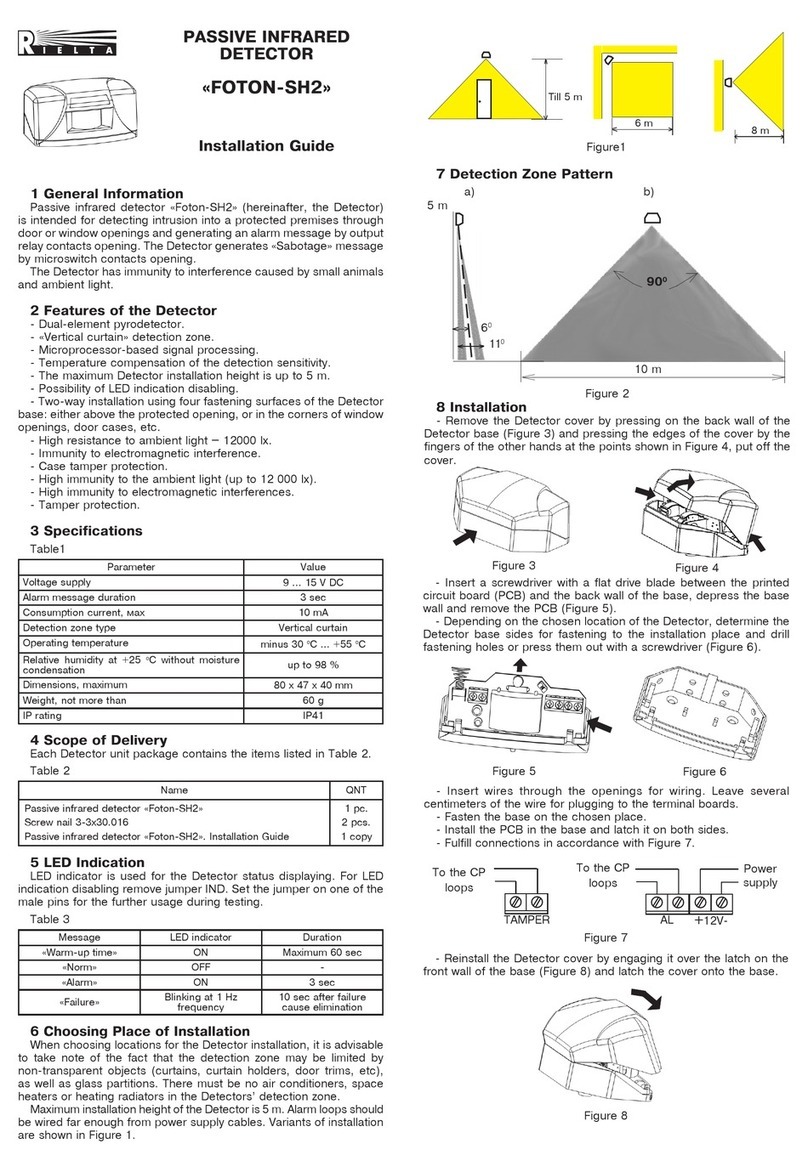
Rielta
Rielta FOTON-SH2 User manual
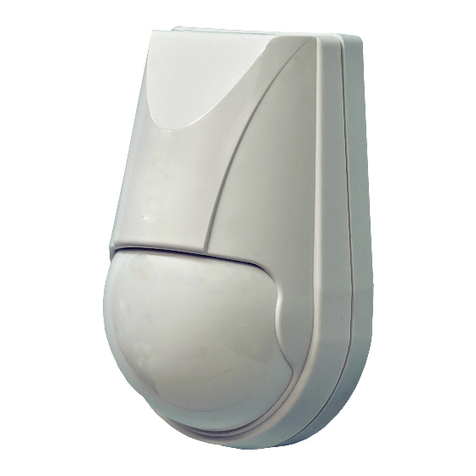
Rielta
Rielta Pyrone-4RK User manual
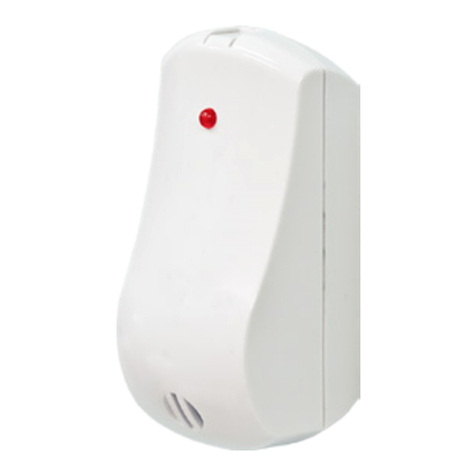
Rielta
Rielta C.Nord CN-Glass User manual

Rielta
Rielta STEKLO-2 User manual

Rielta
Rielta Ladoga MK-RK User manual

Rielta
Rielta ZVON-1 User manual

Rielta
Rielta STEKLO-3M User manual
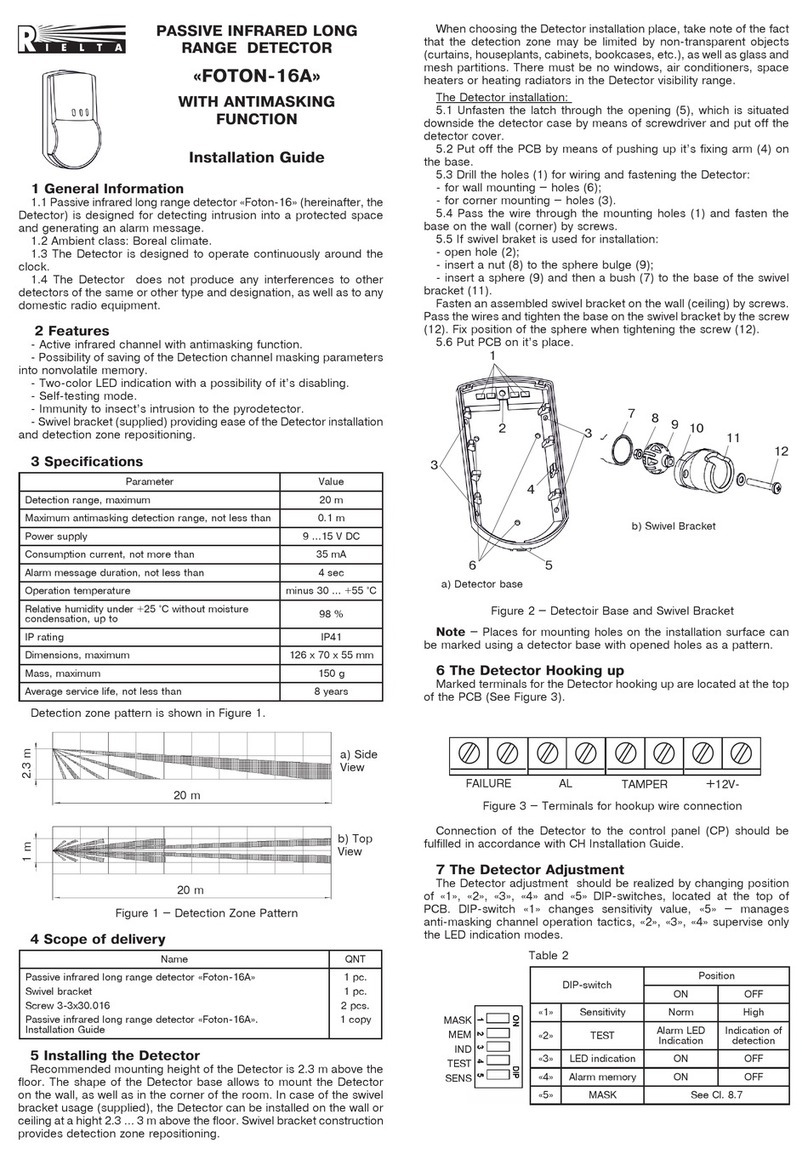
Rielta
Rielta FOTON-16A User manual
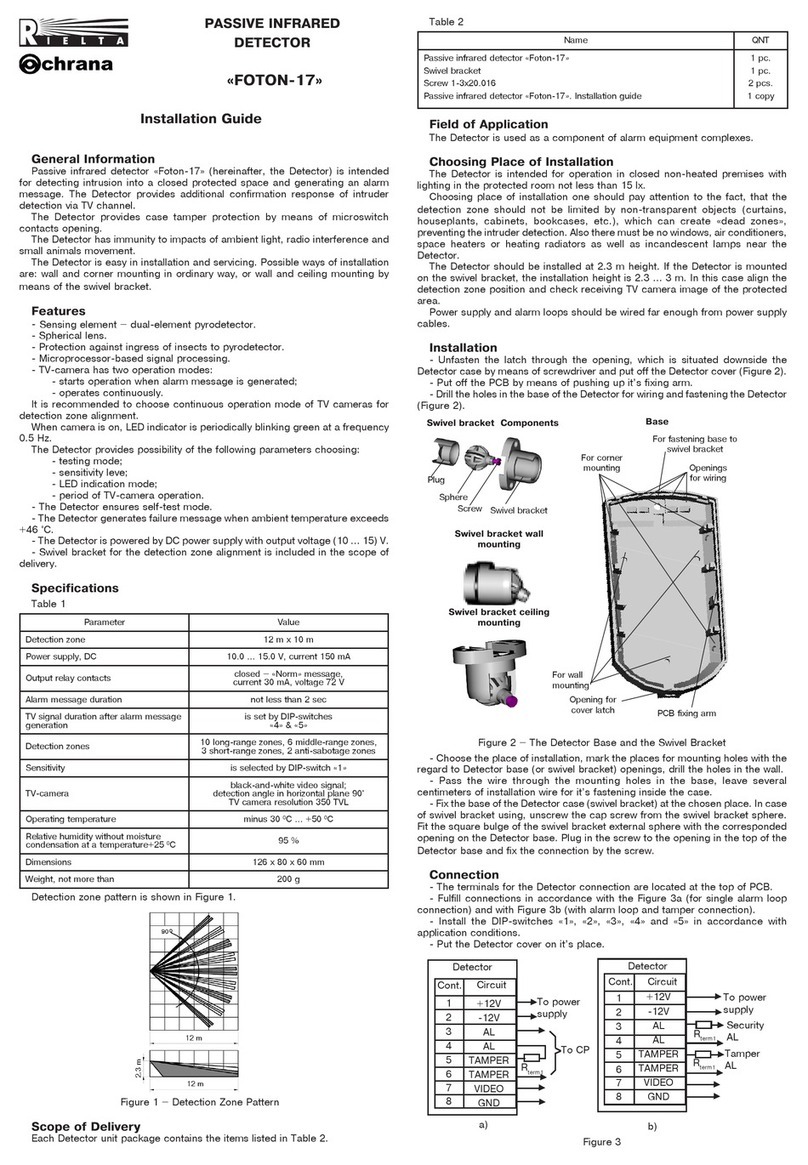
Rielta
Rielta FOTON-17 User manual

Rielta
Rielta STZ-RK User manual
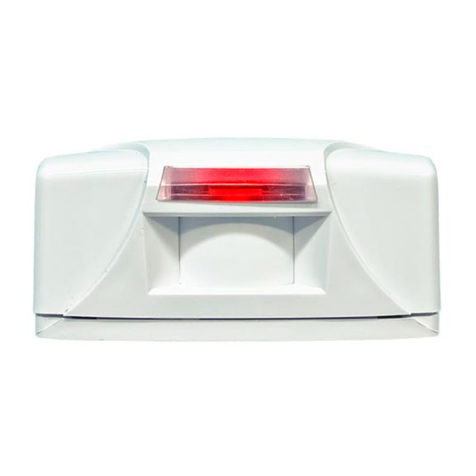
Rielta
Rielta PYRONE-SH2-RK User manual
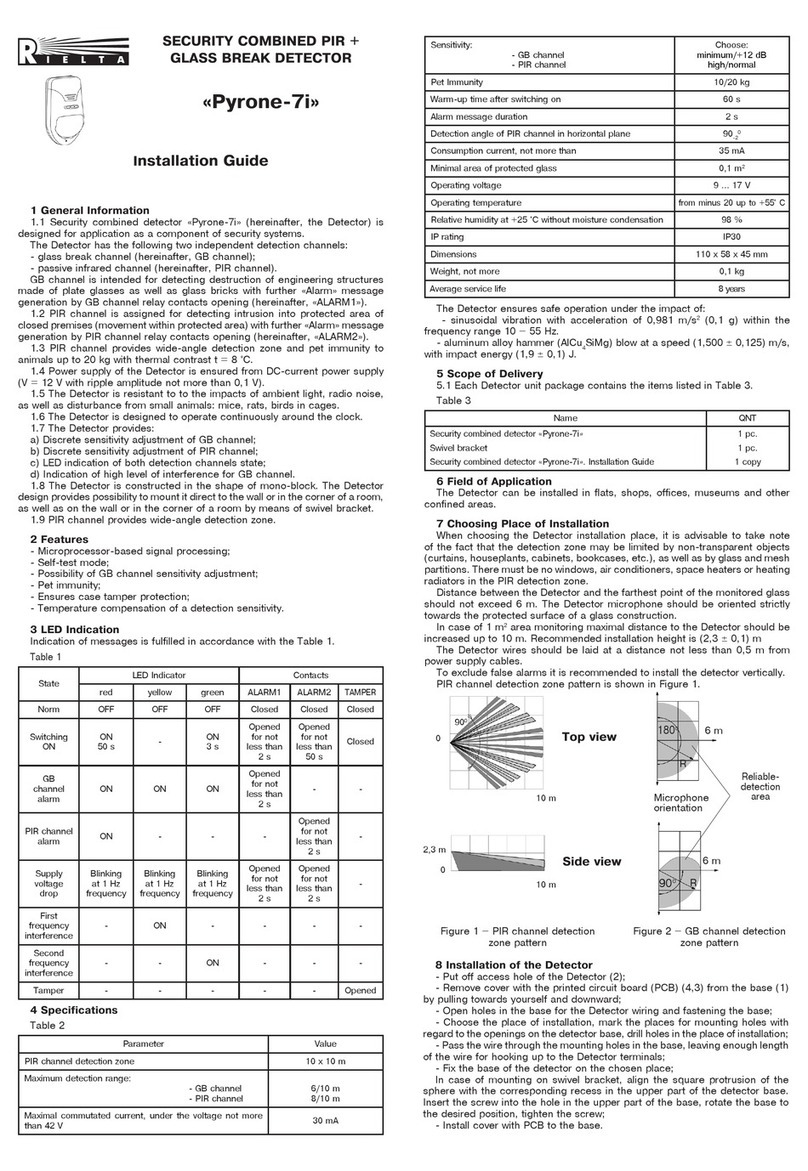
Rielta
Rielta Pyrone-7i User manual
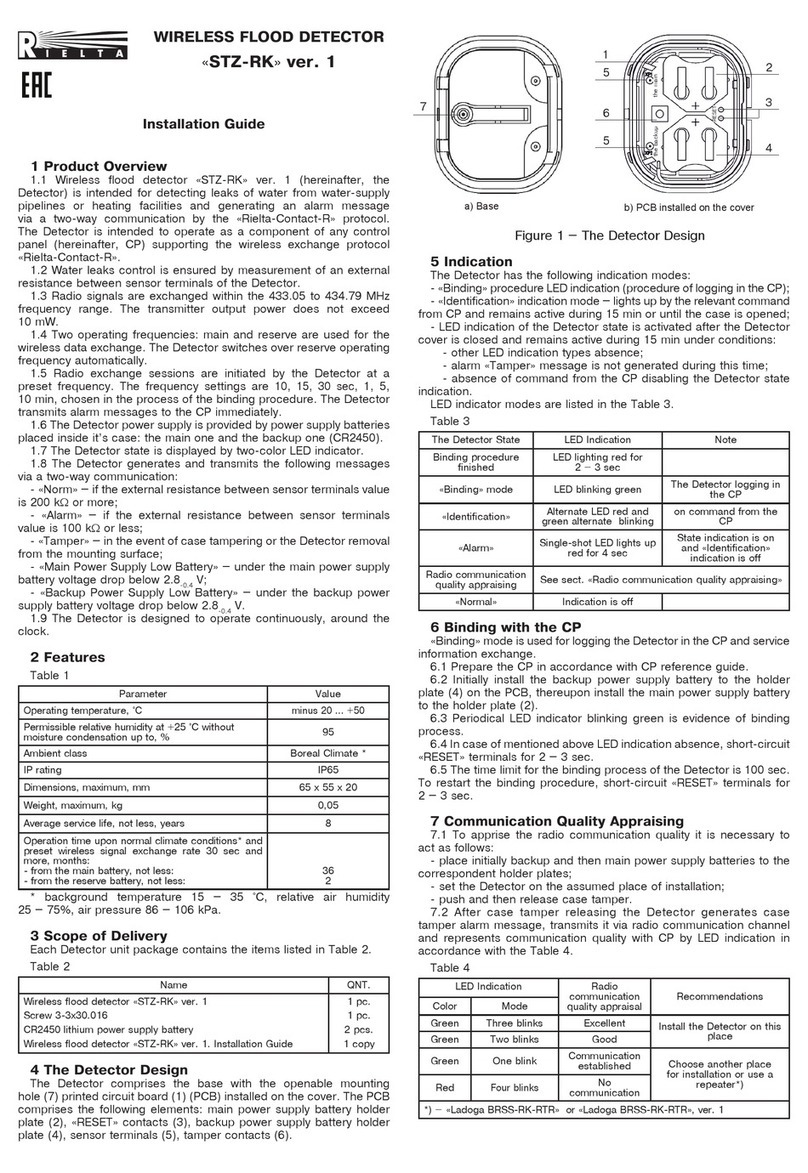
Rielta
Rielta STZ-RK User manual

Rielta
Rielta PYRONE-4i User manual
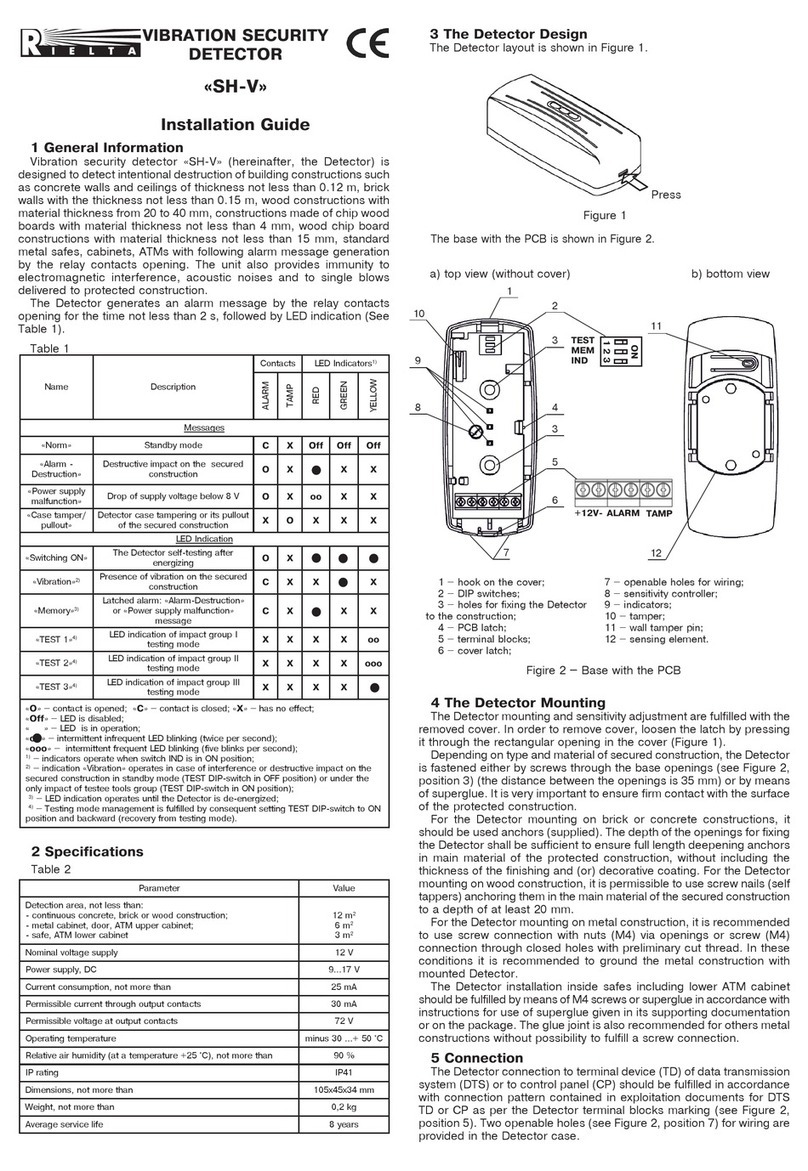
Rielta
Rielta SH-V User manual

Rielta
Rielta STEKLO-3 User manual

Rielta
Rielta OCHRANA Ladoga MK-RK User manual
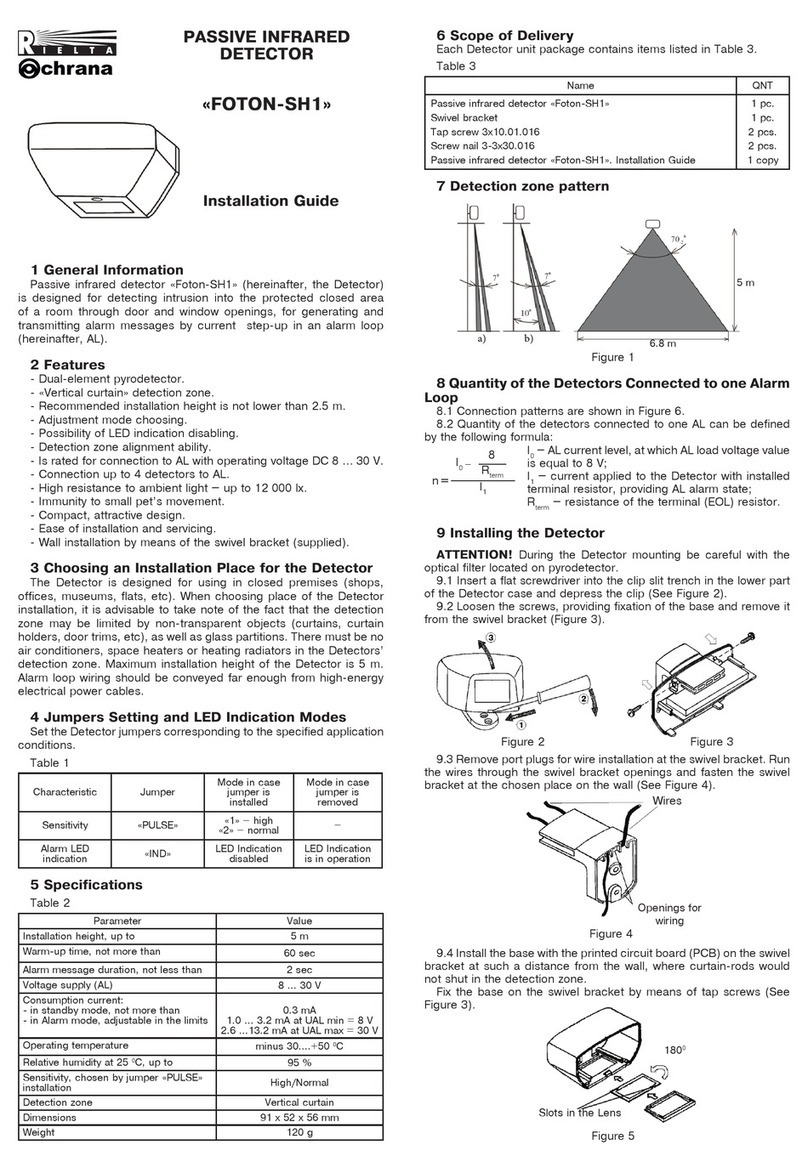
Rielta
Rielta FOTON-SH1 User manual
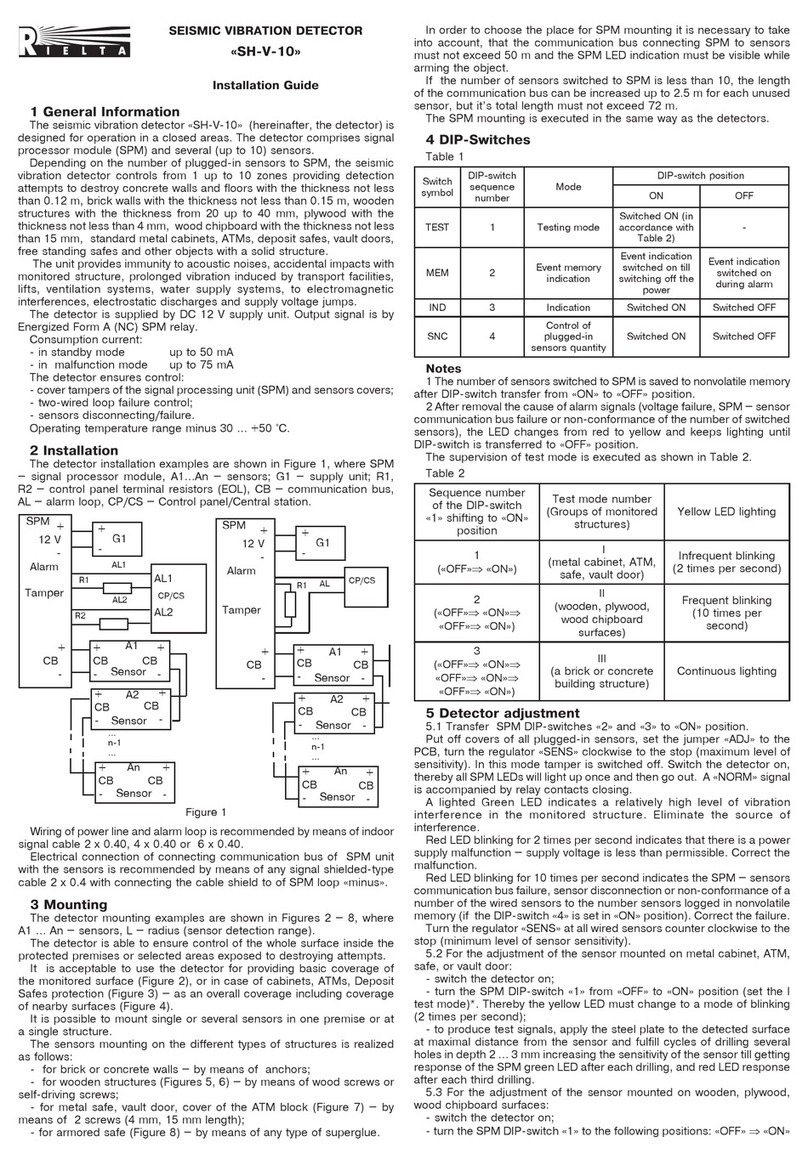
Rielta
Rielta SH-V-10 User manual
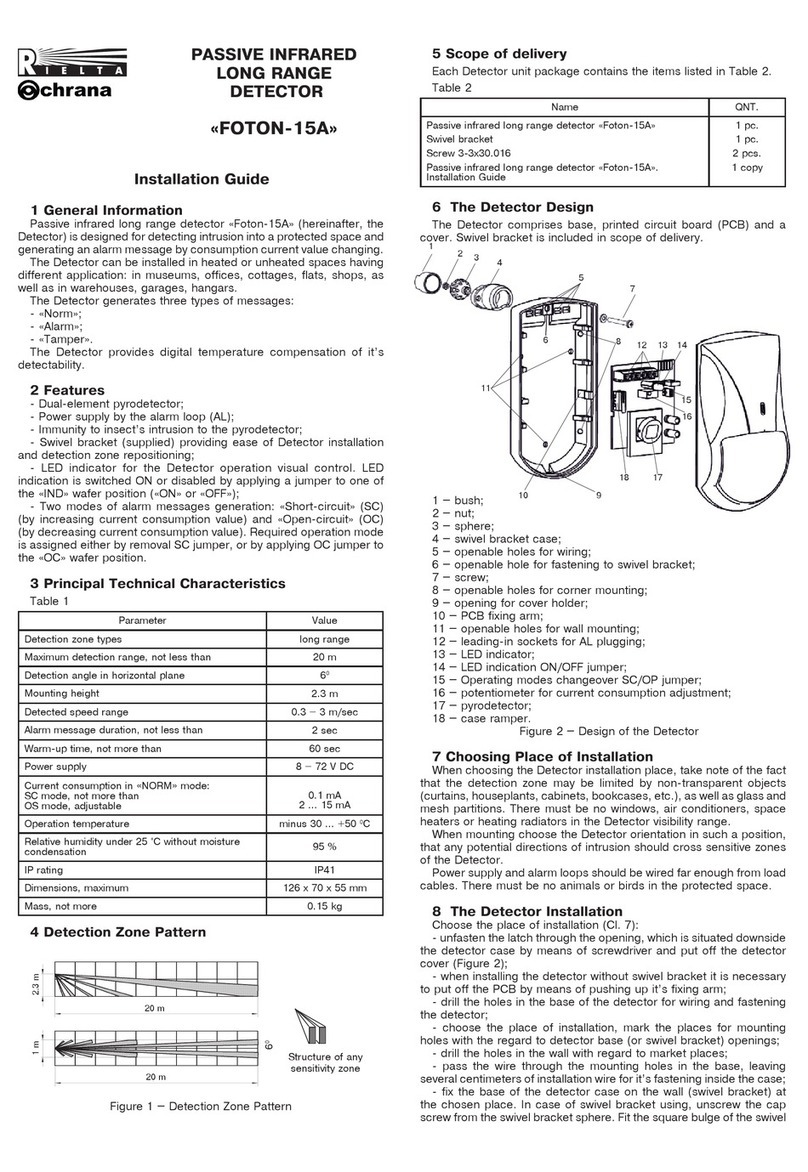
Rielta
Rielta FOTON-15A User manual
